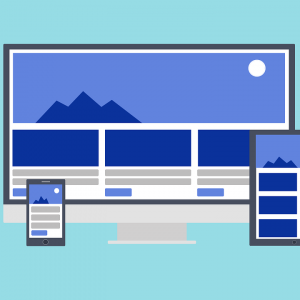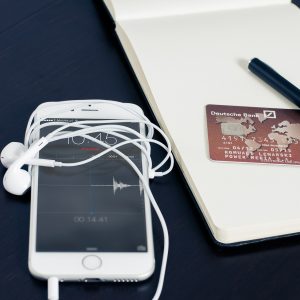Develop an ability to manage commercial transactions electronically, particularly via the internet. While the course is concerned with marketing, management and processing; the primary concern is marketing. E commerce is short for ‘electronic commerce’. It is anything concerned with doing business electronically. Ecommerce includes commerce conducted over the internet, but also other forms of electronic commerce such as telephone banking, using a fax, or generating and managing accounting systems on a computer (without use of the internet). This course focuses on the internet; but covers other aspects of e commerce as well.
COURSE STRUCTURE
The duration of this online course is 100 hours. This consists of 8 in-depth lessons:
- Introduction: What is e-commerce, scope of e commerce. E commerce problems & advantages, security, using the internet, contract law, How different electronic payment systems work (eg. credit card, bank transfer etc)
- Success & Failure: What makes a web site commercially successful? Relaxing with technology, what can go wrong, site visibility, interactivity of a site, etc
- Promotional Strategies: Internet differences; Internet code of conduct, marketing management, target marketing, categories of url’s (search engines, ffa’s, directories etc)
- Optimizing Web Site Potential: Monitoring visitors, Ground rules keep changing, Meta tags, Evaluation services, Submission services, etc
- Increasing Web Site Exposure: Developing a marketing plan, Promoting a site, Forms of advertising, Types of Marketing (Affiliate marketing; Free Content Marketing; Drive in Marketing, Buzz Marketing and User Group Marketing.)
- Automating Supply of Goods, Services and Cash flow: Ways to process payment; Ways to supply goods or services.
- Managing Constant Change: Ways to keep information up to date, Resource Planning, Information Currency vs Cash Currency, etc.
- Dealing with E Commerce Problems: Learning from mistakes (others & yours)
Lesson Aims
- Recognise the nature and scope of e commerce
- Differentiate between successful and unsuccessful e commerce operations, and identify key factors in their success or failure
- Develop strategies for promotion of business activity using broad e commerce tools.
- Monitor and adjust e commerce strategies on a web site in order to improve performance with respect to stated goals.
- Develop strategies that will cause growth in Web Site exposure.
- Distinguish between alternative e commerce tools for managing the supply of goods and services, and the flow of cash.
- Develop methods for managing change within the e commerce context.
- Manage risk within the e commerce context in order to minimise the impact of problems that emerge.
Course Examples
- Research demographic information in a specific locality that may be relevant in profiling a particular market sector (You are free to select any market sector that is relevant, or of interest to yourself
- Investigate how credit cards work for a business. As a business operator, how do you process a payment; how do you get paid, and what costs are involved. How does a cash machine work, and why would a business use this rather than other methods of processing credit cards?
- Go to http://www.dmoz.com and work out how to submit a website. Go through the process but do not do the actual submission. Explain the steps taken to submit the site
- Consider ways an e marketing strategy could be used for selling motor cars need to be different to an e marketing strategy for selling books?
- Present a plan for marketing a service or product using e commerce
- What are the advantages and disadvantages of using a PR firm to promote a web site rather than doing it yourself?
- How would you decide on the value of listings on different Search Engines and Directories?
- Surf the net to identify different sites, each using one of the following marketing types:
Affiliate marketing; Free Content Marketing; Buzz Marketing and User Group Marketing. Compare these 4 different sites, and make notes about how well you feel each is marketing itself and why. - Develop a Marketing plan for a web site that includes both on line and off line promotions.
Using a budget of $5000, outline how and on what you would spend the money, using at least3 types of paid advertising and 3 types of free advertising - How can a potential buyer determine whether it is safe to use their credit card number over the internet?
- How would you respond if a potential customer in another country says they want to purchase from you; but insists they pay you in their countries currency; and not yours?
- What is the fastest way of getting a payment made by a customer to appear in your own bank account?
- Banking on-line is becoming an accepted norm by society.List the different on-line services being offered by banks today.
- Consider three different products offered electronically.Name them and then explain how you would arrange delivery of these products.Give reasons why you chose those particular modes of delivery.
How does a Warnborough Online Course Work?
You can start the course whenever is convenient for you. You will be studying from home and have access to support from our qualified tutors. Practical exercises and research tasks will be set at the end of each lesson – including an assignment. You will submit this assignment to your course tutor, who will mark your work and give you constructive feedback and suggestions.
If you have any questions please contact us.





